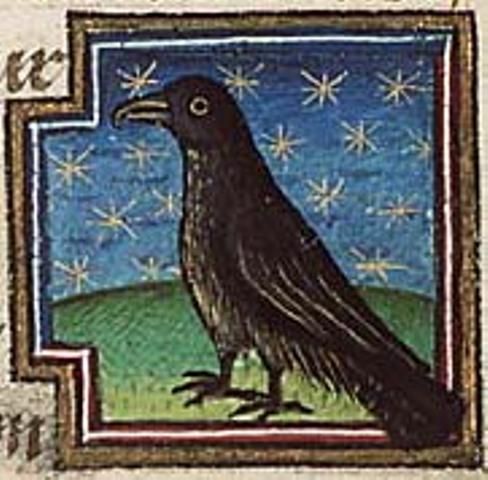















Siege Perilous
"The Perilous Seat"
Fr. siège: seat.
The seat of the most worthy knight in the world, generally the hero of the grail quest.
It first appears in Robert de Boron's Le Roman du Graal; it is abscent from Chretien's earlier Perceval. Here, the chair originates with the fellowship devised followers Joseph of Arimathea after the start of their wandering from the Holy Land to Britain. Like the table of the last supper, Joseph's brother-in-law Brons the Fisher King creates a table with thirteen places; twelve are filled by righteous followers, while the thirteenth is left empty, representing Judas. A sinful follower, Moys, sits in the seat despite having been forbidden, and is "hurled into the abyss."
Skipping ahead, King Arthur has been crowned, and at Pentecost sets up the Round Table devised by Merlin; he follows the pattern of Joseph of Arimathea, setting up thirteen chairs, leaving one unfilled. Perceval comes to the court, joins the fellowship, and demands to sit there. He does so against everyone's wishes, and the stone upon which the seat stands splits; a voice declares that Perceval only survived by benefit of being the Fisher King's grandson, and that the only way to seal the broken stone and heal the now-diseased Fisher King is to seek out the Holy Grail, brought to Britain by Joseph's followers.
In the Lancelot - Grail Cycle|Lancelot-Grail and Le Morte d'Arthur|Malory versions, the chair is similar, but takes a different path. Malory says it was made by Merlin; when Galahad appears at court, his name miraculously appears inscribed on the chair, as does the words "Four hundred winters and four and fifty accomplished after the passion of our Lord Jesus Christ ought this siege to be fulfilled" (placing the story around the year 487). He sits in the chair, and the grail appears at the court. everyone feasts from it, and are then inspired to go in search of the grail, with the implication that Galahad is the one who will win it.
Now, what to make of this seat? Some have pointed out the similarity of the chair to that of the magical Gorsedd Arberth in the Mabinogion, wherein Pryderi foolishly sets foot and causes an enchantment on the land of Dyfed. Others see a relationship between the Siege and the Lia Fail of Ireland, wherein if the proper king sets foot on it, the stone will cry out. Others compare it to the Stone of Scone. However, these two are unsatisfactory--for nothing happens to those who arn't worthy of the spot. Whether there is a relation, however tenuous, between the Siege and the Gorsedd, I cannot say, though there is other circumstantial evidence conflating the story of Perceval, nephew/grandson of Brons, and Pryderi, nephew of Bran.

Back to "S" | Back to JCE
Home
Mary Jones © 2004